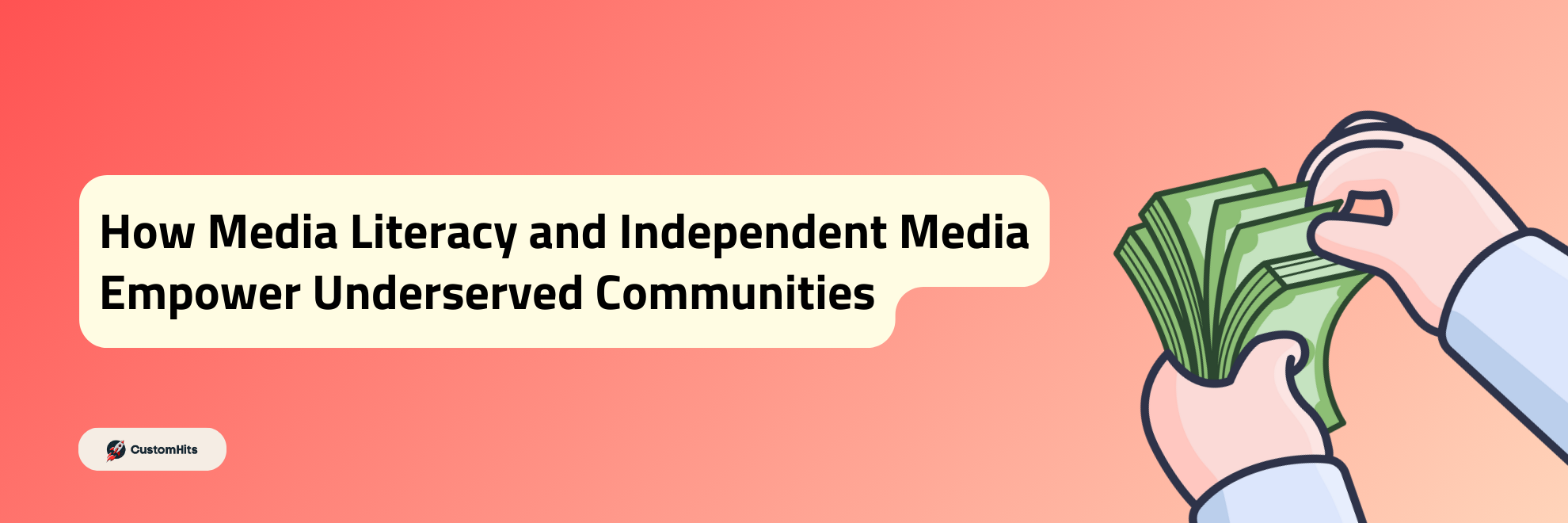

Overview
Content
How Media Literacy and Independent Media Empower Underserved Communities
In an era of unprecedented media saturation, understanding the power of media literacy and independent media is crucial for fostering an equitable and thriving society. This article explores how these two intertwined concepts create opportunities for underserved communities to break free from the shackles of marginalization and unlock their full potential.
Key Takeaways
- Media literacy empowers individuals to critically analyze and create media content, fostering a more informed and engaged society.
- Independent media outlets provide diverse perspectives and amplify voices often marginalized or underrepresented in mainstream media.
- Community-based media initiatives offer opportunities for skill development, self-expression, and economic empowerment for underserved communities.
- Media literacy education and independent media collectively challenge dominant narratives, promote cultural diversity, and drive social change.
In an era of unprecedented media saturation, understanding the power of media literacy and independent media is crucial for fostering an equitable and thriving society. This article explores how these two intertwined concepts create opportunities for underserved communities to break free from the shackles of marginalization and unlock their full potential.
The Transformative Power of Media Literacy
Understanding Media Literacy
Media literacy is the ability to critically analyze, evaluate, and create media content across various platforms. It involves developing a keen understanding of the techniques, narratives, and ideologies that shape the media landscape. By cultivating media literacy, individuals can navigate the vast sea of information with discernment, recognizing biases, challenging established narratives, and actively participating in the creation and dissemination of content.
Empowering Underserved Communities
For underserved communities, media literacy serves as a powerful tool for self-expression, advocacy, and social change. It equips individuals with the skills to critically examine the representation and portrayal of their communities in mainstream media, enabling them to challenge harmful stereotypes and promote more accurate and nuanced narratives.
Media literacy also provides a platform for underserved communities to share their stories, experiences, and perspectives, amplifying their voices and fostering greater understanding and empathy within the broader society.
Breaking Down Barriers
One of the most significant barriers faced by underserved communities is the lack of access to resources and opportunities for personal and professional growth. Media literacy initiatives can help bridge this gap by offering training programs, workshops, and mentorship opportunities that empower individuals with the necessary skills to create and disseminate their own media content.
By fostering media literacy, underserved communities can reclaim their narratives, challenge dominant discourses, and participate in shaping the cultural and social landscapes that have historically marginalized them.
The Role of Independent Media
Diversifying the Media Landscape
Independent media outlets play a pivotal role in fostering a more inclusive and diverse media ecosystem. Unlike mainstream media, which is often driven by commercial interests and beholden to corporate agendas, independent media prioritizes the amplification of marginalized voices and the exploration of underrepresented perspectives.
These alternative platforms provide a space for underserved communities to share their stories, raise awareness about pressing issues, and challenge the dominant narratives that have perpetuated their marginalization.
Giving Voice to the Voiceless
Independent media serves as a megaphone for underserved communities, amplifying their voices and shedding light on the struggles, triumphs, and lived experiences that are often overlooked or misrepresented in mainstream media. By providing a platform for these narratives, independent media contributes to a more nuanced and inclusive understanding of the diverse tapestry of society.
Fostering Community Engagement
Independent media outlets often have deep roots within the communities they serve, fostering a sense of ownership and engagement. This connection allows underserved communities to actively participate in the creation and dissemination of content, ensuring that their perspectives and stories are accurately represented.
Community-based media initiatives not only provide a platform for self-expression but also offer opportunities for skill development, capacity-building, and economic empowerment, ultimately contributing to the overall well-being and thriving of underserved communities.
Synergizing Media Literacy and Independent Media
Challenging Dominant Narratives
By combining the power of media literacy and independent media, underserved communities can effectively challenge the dominant narratives and biases that have historically marginalized them. Media literacy equips individuals with the critical thinking skills to deconstruct and analyze media content, while independent media provides alternative platforms to amplify diverse voices and perspectives.
This synergy empowers underserved communities to assert their agency, reclaim their narratives, and actively shape the cultural and social discourses that impact their lives.
Promoting Cultural Diversity
In a globalized world, celebrating and embracing cultural diversity is essential for fostering a more inclusive and equitable society. Independent media outlets that prioritize underserved communities play a crucial role in preserving and promoting cultural heritage, traditions, and narratives that might otherwise be overshadowed or erased by dominant cultural forces.
By combining media literacy and independent media, underserved communities can not only preserve their cultural identities but also share them with the broader society, fostering greater understanding, appreciation, and respect for diversity.
Ultimately, the intersection of media literacy and independent media serves as a catalyst for social change. By empowering underserved communities with the tools to critically analyze and create media content, and by providing platforms for their voices to be heard, these communities can challenge systemic inequalities, advocate for their rights, and drive meaningful social, political, and economic change.
Independent media outlets and media literacy initiatives have played pivotal roles in various social movements, amplifying calls for justice, equality, and representation, and inspiring collective action towards a more equitable and just society.
Case Studies: Empowering Underserved Communities
Community Radio Initiatives
Community radio stations have emerged as powerful platforms for underserved communities to share their stories, preserve cultural traditions, and address local issues. These grassroots initiatives not only provide a voice for marginalized groups but also offer opportunities for skill development, media production training, and community engagement.
One notable example is the Koahnic Broadcast Corporation in Alaska, which serves indigenous communities by broadcasting in Native languages and promoting cultural preservation efforts. By combining media literacy education with community radio programming, these initiatives empower underserved communities to reclaim their narratives and assert their cultural identities.
Participatory Video Projects
Participatory video projects have gained traction as a powerful tool for empowering underserved communities. These initiatives involve training community members in video production techniques, enabling them to document their lived experiences, share their perspectives, and advocate for their rights and needs.
Organizations such as InsightShare have facilitated participatory video projects in various parts of the world, allowing marginalized communities to amplify their voices and drive social change. By combining media literacy skills with video production, these projects foster self-expression, community empowerment, and grassroots advocacy.
Youth Media Programs
Investing in the media literacy and creative potential of youth from underserved communities is crucial for fostering a more inclusive and equitable future. Youth media programs, such as those offered by organizations like The LAMP (Learning About Multimedia Project), provide hands-on training in various media production techniques, including video, audio, and digital storytelling.
These initiatives not only equip young people with valuable skills but also offer a platform for self-expression, personal growth, and community engagement. By combining media literacy education with creative outlets, these programs empower underserved youth to find their voices, challenge stereotypes, and become agents of positive change within their communities.
Conclusion
In an increasingly media-saturated world, the synergy between media literacy and independent media offers a powerful catalyst for empowering underserved communities. By fostering critical thinking skills and providing alternative platforms for self-expression, these intertwined concepts challenge dominant narratives, amplify marginalized voices, and drive meaningful social change.
As we navigate the complexities of the 21st century, embracing media literacy and supporting independent media initiatives will be crucial in creating a more inclusive, equitable, and thriving society. By empowering underserved communities with the tools and platforms to share their stories, celebrate their cultures, and advocate for their rights, we can collectively build a world where every voice is heard and every perspective is valued.
Together, we can harness the transformative power of media literacy and independent media to create a more just, diverse, and vibrant future for all.
Thank you all for reading,
Joshua T Berglan
